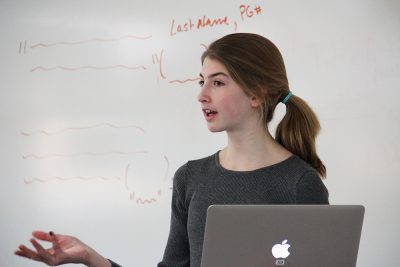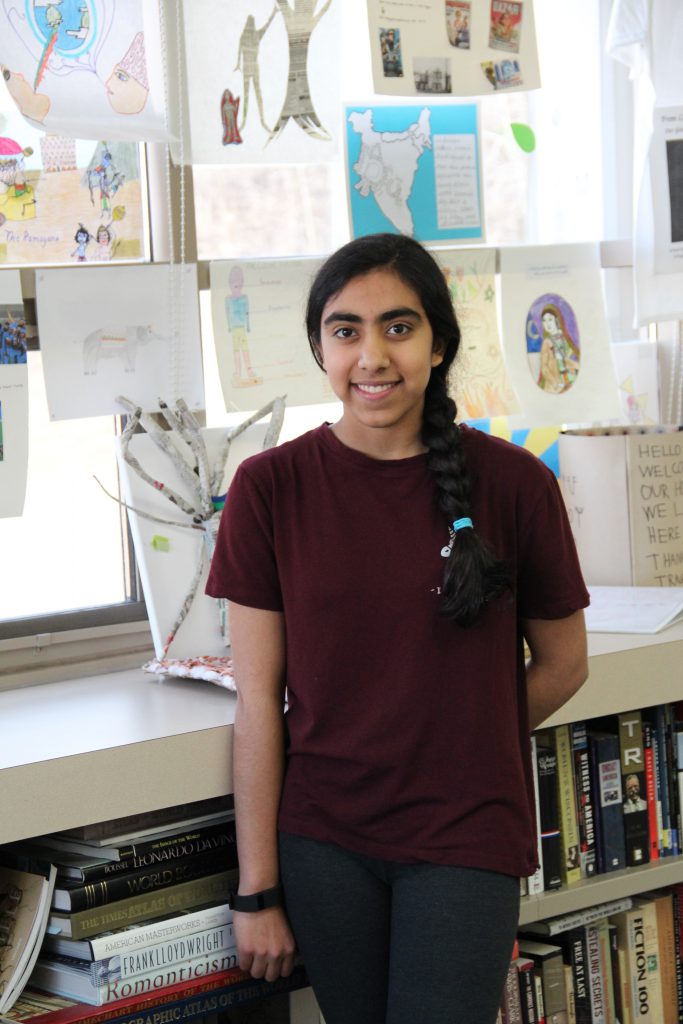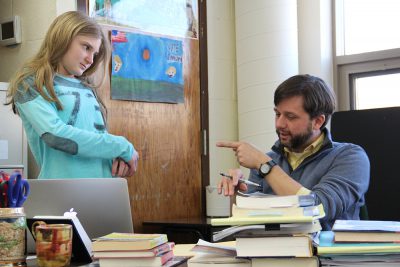April 15, 2017
 Mounds Park Academy fosters innovative teaching that fuels creative thinking and sparks a passion for learning. Every day MPA teachers are creating active and engaging learning opportunities with real-world implications, emphasizing critical thinking, problem solving, collaboration, and deep understanding over rote memorization. Every opportunity is maximized to allow students to explore, create, and express their ideas in ways that build on their inherent motivation and self-direction.
Mounds Park Academy fosters innovative teaching that fuels creative thinking and sparks a passion for learning. Every day MPA teachers are creating active and engaging learning opportunities with real-world implications, emphasizing critical thinking, problem solving, collaboration, and deep understanding over rote memorization. Every opportunity is maximized to allow students to explore, create, and express their ideas in ways that build on their inherent motivation and self-direction.
Examples of student-directed learning abound at MPA in small and large ways, from allowing students to choose a topic to demonstrate what they’ve learned to engaging them in designing an entire unit. Our teachers love uncovering new and innovative ways to include students in the learning process, guiding them to take ownership for their academic and intellectual development.
Student-Designed Unit a Resounding Success
After teaching in a large urban school district, Middle School history teacher George Dalbo appreciates the comparative flexibility that MPA offers him; he feels that state standards and testing can limit the flexibility of public school teachers.
Earlier this year Dalbo offered an entirely student-driven unit on South Asia. When he initially considered having the students involved in structuring the unit, Dalbo thought that he would simply host a focus group and those students would present ideas to the class. But every student wanted to be involved.
Over the span of a week, Dalbo and the class designed the unit, determining potential topics, projects, and assessments. The students requested less assigned homework. With that consideration, Dalbo and the class created a point-based system that required each student to attain at least 140 points over the course of the 40-day unit. With extra work, it was possible for the students to achieve a perfect 100 percent.
 More Freedom, More Work?
More Freedom, More Work?
What surprised Dalbo about his entirely student-driven learning experience was that the students ended up doing more work than they would have if he had assigned the projects. So much for less homework!
“Giving the students a voice and the license and opportunity to pursue projects that sparked their interest was extremely motivating for them,” said Dalbo. “Approximately one third of the class got 100 percent because they did extra work.”
Anya K. was one of those students. She earned 145 points of the 140 needed. “In each assignment I did more work,” Anya said. “While I had fewer assignments, they were more elaborate than a typical project. When you get to pick what you do—and it’s something that you want to do—you learn more.”
Anya, who is Indian, also loved that the class gave her a unique opportunity to share her cultural traditions with her friends, in some cases challenging their assumptions. “When my friends think of a wedding, they think of a white dress and a church,” said Anya. “But my wedding will be very different, and it was cool to share what an Indian wedding ceremony is like.”
She also enjoyed creating and sharing her artwork based on Diwali, India’s most important holiday of the year, and one of Anya’s favorite celebrations.
“It was so fun to see all of my classmates’ projects displayed,” remarked Anya. “I learned something new every day.”
A Partner in Learning
Having a say in designing the unit and the assignments made Anya feel like “a partner in learning.” She liked the mix of individual, small group, and class projects. Her favorite group project was preparing for a class debate on the Partition of India. Anya laughed when she recalled the debate because “everyone kept agreeing with each other.”
 Dalbo also mentioned the debate as one of the highlights of the unit because students demonstrated a strong grasp on a complicated subject. Rather than a traditional black and white debate, students represented various constituent groups and came together to form a consensus about how to recognize and heal societies after an event like the Partition.
Dalbo also mentioned the debate as one of the highlights of the unit because students demonstrated a strong grasp on a complicated subject. Rather than a traditional black and white debate, students represented various constituent groups and came together to form a consensus about how to recognize and heal societies after an event like the Partition.
While there were some assignments like the debate that required participation of the entire class, most assignments offered the students great flexibility. Anya mentioned that the ability to select their own assignments allowed students to play to their strengths.
“Different people learn in different ways: some learn while reading and some while listening,” observed Anya. “Usually you just have to complete all aspects of the work, but in this unit you could do what worked best for you.”
Learning Alongside The Students
The students chose topics that Dalbo would not necessarily have included such as the influence of Bollywood and the role of sports. Given pop culture, the students were aware of Bollywood and curious about it, particularly as it compares to Hollywood. Dalbo explained that while Hollywood pushes a more liberal agenda, Bollywood is actually very conservative. The comparison of the two film industries led to a “fantastic conversation,” according to Dalbo.
Dalbo admitted that he didn’t know much about Bollywood before the unit, and he enjoyed digging into the subject with his students. Dalbo also knew nothing about cricket, an exceedingly popular sport in India. At the end of the unit, several of the students taught cricket to the class, and they all played a match together.
The class’s interest in sports influenced Dalbo’s selection of topics for an upcoming unit on Sub-Saharan Africa. The class will be examining the role of sports in Apartheid South Africa where rugby was played by whites and soccer by blacks, a notorious distinction that continues today. One student was so inspired that she wrote an extensive English paper on the topic.
Dalbo’s experience in his student-driven unit on South Asia reflects what happens every day at MPA: teachers partnering with their bright, inquisitive, and engaged students. MPA teachers and students are at the heart of this learning community that values diversity, free-thinking, and collaboration.